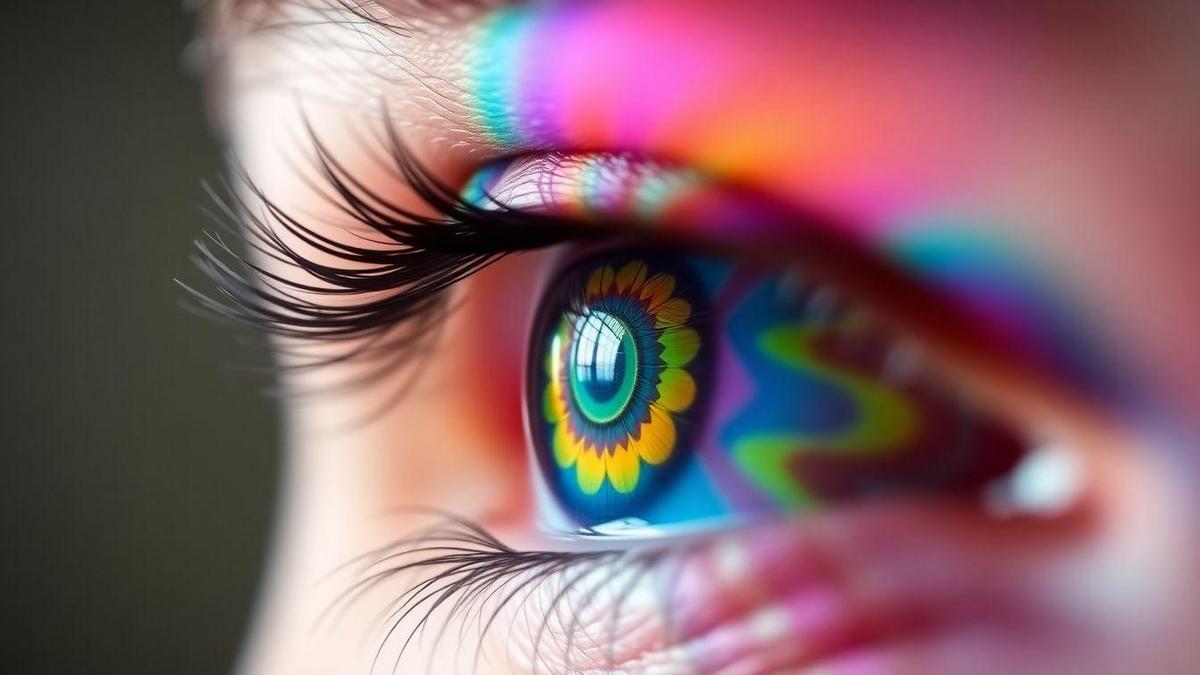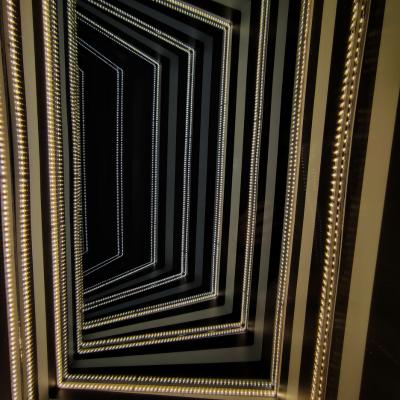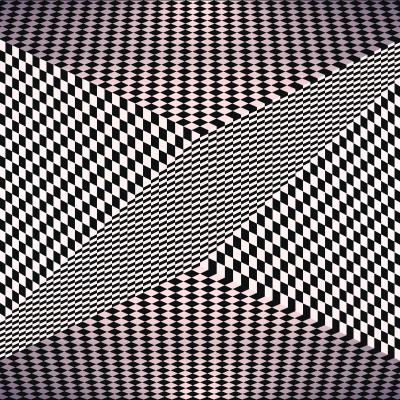Anúncios

Optical illusions show us how perception can be flawed, revealing the brain’s tricks when faced with visual stimuli. These deceptive images challenge our understanding of reality, color, and movement. The physics behind these illusions explains how light and perspective can alter what we believe we see.
Anúncios
Understanding these phenomena is a way to explore the interaction between science and cognition. Through physical and psychological principles, we can uncover how the brain constructs our visual perception. This paves the way for discoveries in art, neuroscience, and creativity.
Understanding the Physics of Optical Illusions That Trick the Brain
Optical illusions have fascinated humanity for centuries, captivating artists and scientists alike. These visual phenomena challenge our perception and reveal the complexities of how our brains interpret the world around us. At their core, optical illusions explore principles of physics and psychology, creating images that deceive our senses. By manipulating light, color, and perspective, these illusions can lead us to see things that aren’t there or perceive objects differently from how they really are.
The study of optical illusions intertwines various disciplines, including neuroscience, cognitive psychology, and even art. Understanding the physics behind these tricks can provide insights into how our visual system works and how our brains process information. By delving into the mechanisms that create these illusions, we can begin to appreciate the intricate relationship between light, perception, and cognition. This exploration not only enhances our understanding of visual phenomena but also sheds light on the broader implications of perception in our daily lives.
How Optical Illusions Work: Mechanisms Behind the Tricks

Optical illusions operate using several fundamental principles that govern our perception of light and color. One key mechanism is how our brains process contrasting colors and shapes. When colors are placed side by side, our perception can change drastically. This phenomenon, known as color contrast, can lead to illusions where colors appear different based on the surrounding shades. For example, a gray square may look lighter or darker depending on the colors that frame it. This effect highlights how our visual system is not just a passive receiver of information but an active interpreter that can be easily fooled.
Another important factor in understanding optical illusions is the role of perspective and depth perception. Our brains rely on various cues to judge distance and depth, such as relative size, texture gradients, and linear perspective. Illusions like the famous Müller-Lyer illusion, where two lines of equal length appear different due to arrow-shaped ends, exploit these depth cues. By manipulating these visual signals, artists and illusionists can create images that challenge our intuitive understanding of space and size, leading to a delightful confusion of the senses.
Additionally, motion can also play a significant role in optical illusions. Some illusions create the impression of movement where none exists, such as the well-known spinning dancer illusion. This phenomenon occurs because our brains interpret visual signals in a way that suggests movement based on the arrangement of shapes and colors. The brain’s attempt to make sense of these conflicting signals can lead to a captivating experience where the viewer perceives motion in a static image. This interaction between movement and perception illustrates the dynamic nature of our visual processing and how it can be easily manipulated.
Finally, cognitive factors also contribute to our experience of optical illusions. Our brains are wired to recognize patterns and make quick judgments based on prior knowledge and experience. This tendency can lead to misinterpretations when presented with ambiguous or conflicting visual information. For example, the famous Necker cube can be perceived from two different perspectives, and our brains may alternate between these interpretations. This phenomenon highlights the active role of cognition in perception, revealing how our mental structures shape our understanding of the visual world.
Advantages of Understanding the Physics of Optical Illusions That Trick the Brain
Gaining a deeper understanding of the physics behind optical illusions offers numerous advantages, especially in improving our cognitive skills and critical thinking. By studying how these illusions work, individuals can develop a sharper eye for visual information, allowing them to better analyze and interpret what they see. This heightened awareness can be beneficial in various areas, including art, design, and even scientific research, where accurate perception is crucial.
Additionally, understanding optical illusions can foster creativity and innovation. Artists and designers often draw inspiration from these visual tricks, incorporating elements of illusion into their work to engage viewers and provoke reflection. By understanding the underlying principles of how illusions manipulate perception, creators can experiment with new techniques and ideas, pushing the boundaries of their art. This exploration of visual perception can lead to richer artistic expression and a deeper appreciation for the complexities of human vision.
Beyond enhancing creativity, studying optical illusions can also have practical applications in fields such as psychology and neuroscience. Researchers can use illusions to investigate how the brain processes visual information and to study conditions like visual agnosia or other perceptual disorders. By understanding the mechanisms behind these illusions, scientists can gain valuable insights into the workings of the human brain and develop interventions or therapies for individuals with perceptual difficulties.
Finally, exploring optical illusions can serve as a fun and engaging way to educate people about the science of perception. By incorporating illusions into educational settings, teachers can spark curiosity and encourage students to think critically about what they see. This interactive approach to learning can make complex concepts more accessible and enjoyable, fostering a lasting interest in science and the arts. Ultimately, understanding the physics of optical illusions that trick the brain can enrich our lives by enhancing our perception, creativity, and understanding of the human experience.
How to Experience the Physics of Optical Illusions That Trick the Brain

Experiencing the physics of optical illusions can be both fun and educational. Here are some ways to engage with these fascinating visual phenomena:
- Explore different types of optical illusions. There are various categories of optical illusions, including literal, physiological, and cognitive illusions. Each type offers unique insights into how our brains process visual information. By exploring these categories, individuals can gain a broader understanding of the mechanisms at play.
- Try visual perception exercises. Engaging in exercises that challenge visual perception can increase awareness of how easily the brain can be fooled. Simple activities like spotting discrepancies in images or solving visual puzzles can sharpen perception skills and provide insights into the complexities of visual processing.
- Study the neuroscience of illusions. Delving into scientific research behind optical illusions can deepen the understanding of the brain’s role in perception. Resources such as academic journals, documentaries, and lectures can provide valuable information about how the brain interprets visual stimuli and the neurological basis for illusions.
- Participate in cognitive psychology activities. Cognitive psychology explores the mental processes underlying perception, memory, and decision-making. Participating in activities that investigate cognitive biases and heuristics can enhance understanding of how our brains construct reality and how optical illusions fit into this framework.
- Analyze perception theories related to illusions. Familiarizing yourself with perception theories, such as Gestalt principles or dual-process theory, can provide a theoretical foundation for understanding optical illusions. Analyzing these theories in relation to specific illusions can reveal the underlying principles that govern visual perception.
- Create your own optical illusions. Engaging in the creative process of designing optical illusions can lead to a deeper understanding of the principles involved. By experimenting with shapes, colors, and perspectives, individuals can gain hands-on experience with how visual tricks are constructed and how they affect perception.
By actively engaging in these activities, individuals can enhance their understanding of the physics of optical illusions that trick the brain and appreciate the intricate relationship between perception and reality. The experience can be both enlightening and enjoyable, sparking curiosity about the wonders of the visual world.
Did You Enjoy Learning About the Physics of Optical Illusions That Trick the Brain?
Learning about the physics of optical illusions is a captivating journey into the intricacies of human perception. By exploring how our brains interpret visual information, we gain valuable insights into the complexities of our cognitive processes. This knowledge not only enriches our understanding of art and science but also enhances our ability to navigate the visual world around us.
As you continue to explore the fascinating realm of optical illusions, consider how these visual tricks can inspire creativity and innovation in your own life. The interplay between perception and reality offers endless opportunities for discovery, encouraging us to look beyond the surface and appreciate the wonders of human experience.
Frequently Asked Questions
What are optical illusions?
Optical illusions are images that trick your brain. They make you see something that isn’t really there.
How is physics related to optical illusions?
Physics helps explain how light and vision work. This explains how illusions trick your brain.
Why is my brain fooled by optical illusions?
Your brain uses quick visual cues to understand the world. Sometimes, these cues can be confusing.
Are there different types of optical illusions?
Yes! There are illusions that trick color, shape, and movement. Each uses physics in different ways.
Can the physics of optical illusions be used in real life?
Absolutely! Designers and artists use the physics of optical illusions to create amazing and deceptive works.
